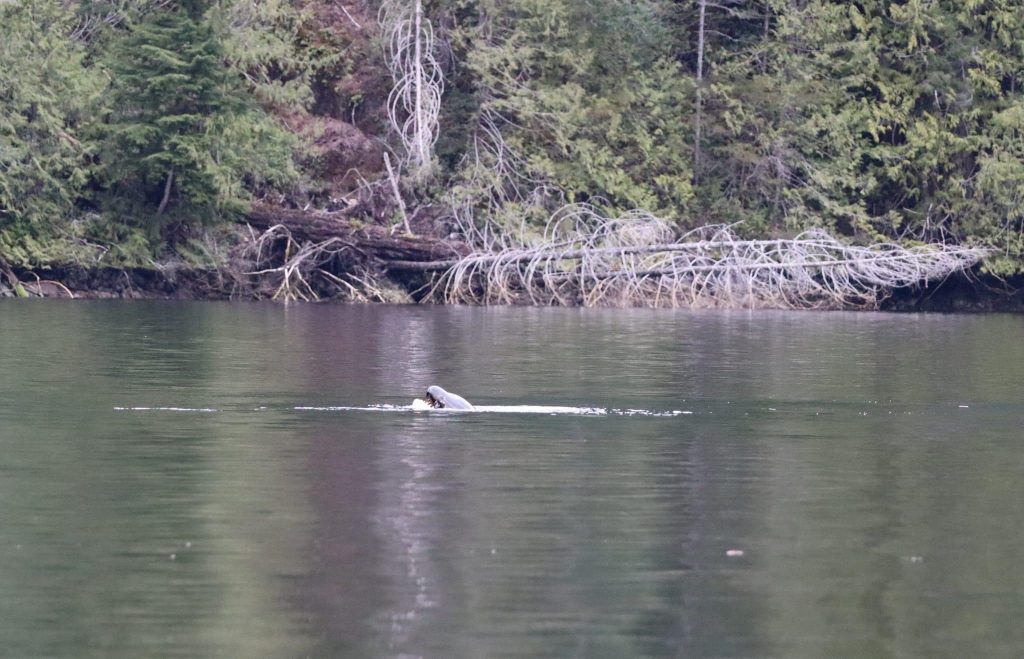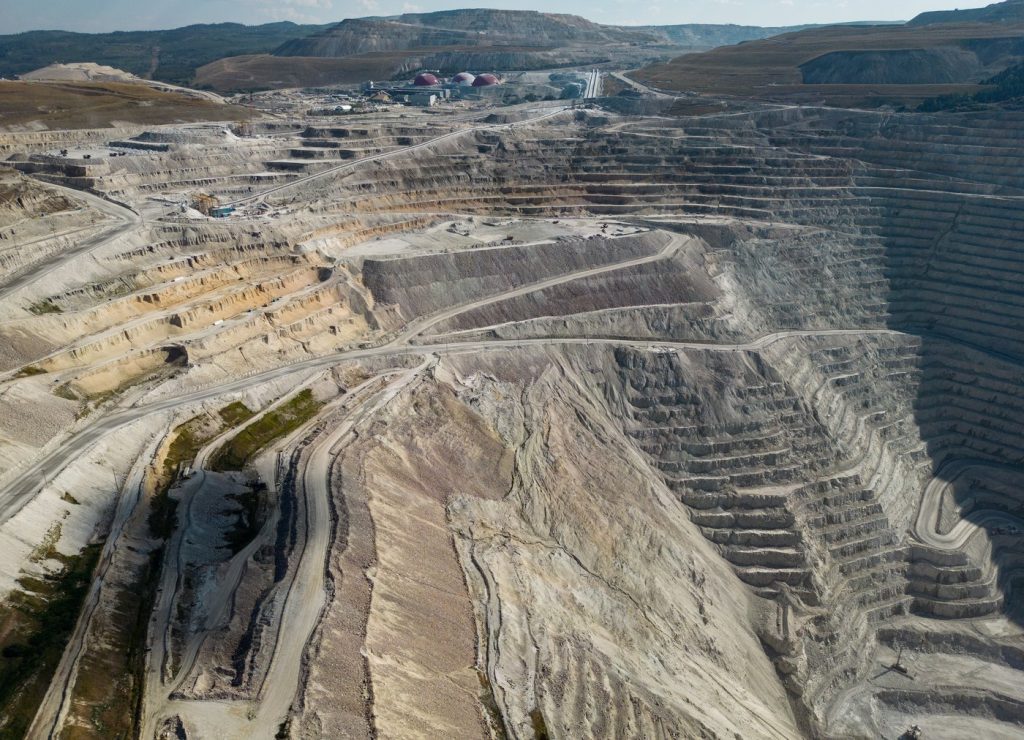Rescuers continue efforts to free orca calf, kʷiisaḥiʔis, trapped in B.C. lagoon

Posted March 29, 2024 3:55 pm.
Last Updated March 30, 2024 3:38 pm.
An official with the Department of Fisheries and Oceans Canada (DFO) says rescue efforts to get an orphaned calf out of a lagoon off Vancouver Island have not been successful so far, but attempts are ongoing.
On Thursday, crews worked with First Nations to try to persuade the baby whale out during high tide, according to a statement from the Ehattesaht First Nation shared by the DFO.
“The on-water operation involved using Oikomi pipes from a line of vessels as a sound wall to move the animal through the narrow exit point,” the statement said.
“The team worked in perfect unison to move the whale calf, to the shallow area near the outflow. Unfortunately, the juvenile whale would not make the final trek over the sandbar; this is the same sandbar the pregnant mother live-stranded on last Saturday.”
The two-year-old calf’s mother died in the lagoon last weekend while local residents tried to free the beached animal, and a necropsy of the 15-year-old Bigg’s killer whale showed she was pregnant with a female fetus when she died.
In Thursday’s effort, the calf broke through the wall and moved back to the deep part of the lagoon.
“This was a disappointing outcome for all involved,” the First Nation said.
“However, it demonstrated the potential effectiveness of this technique and the capacity for the highly diverse team to work in tandem for a seamless execution.”
The whale was seen with a bird in its mouth, which rescuers are taking as a good sign.
“So there are indications the animal is actively pursuing feeding opportunities,” according to the statement.
“Responders will continue to monitor and assess the whale calf’s activities and health over the next few days as the plans going forward are decided on.”
Challenging tides are hampering the work, and there will be a break in the efforts over the weekend.
“Given the efforts and significant interactions on-water yesterday and the fact that the high tides are too low during the next few days, there are no on-water rescue activities planned during this time,” the statement said.
“This will provide an opportunity for those working on the operation to get some needed rest, carry out any maintenance or repairs on equipment, restock.”
The break will allow responders to work with the Ehattesaht and Nuchalaht First Nations to determine plans for once the tides are more conducive.
The DFO says 11 vessels have been on the scene working to help the baby whale, which the Ehattesaht First Nation says is “a considerable accomplishment given the remoteness of the area and the lack of major urban centres in the vicinity to source additional resources.”
Paul Cottrell, the pacific marine mammal coordinator with Fisheries and Oceans Canada, says officials and local First Nations are “monitoring and assessing” the animal from afar this weekend.
He says they are using drones to observe the animal and assess its “body condition” as they await more favourable tides in the coming days.
Cottrell tells CityNews, as of Saturday, March 30, crews are getting equipment organized while still monitoring the orca.
He says they are not “doing any mitigation” on water work in the next few days because the tides are still not suitable for any action.
“It’s been a really busy week for the team and they’ve done an amazing job and everybody’s working together… we’ve used some of the techniques that have been successful in the past and similar type incidents,” he said.
He says acoustic playbacks, Oikomi pipes, and Hukilau have been used to convince the calf to move, but it was not enough to move the calf over the shell sandbar to exit the lagoon.
“We’re anxious to do as much as we can and the team is not giving up,” he said.
Cotrell says weather, currents, and all sorts of moving parts must align for the act to be successful.
“We have contingencies if the animal is not going to leave the lagoon, and we’re going to monitor and assess every day. We’re looking at the health of the animal over time,” he said.
He says the access to the lagoon is challenging.
“The area where the animal is is very isolated. It’s a very shallow entrance. There’s a makeshift boat launch, to launch a boat within the lagoon,” he said.
“The folks have been amazing in the community and the local roads contractor has been amazing in helping us.”
Cottrell tells CityNews that there are always risks with these approaches, but crews are working with the complicated variables and updating their plans as they go.
The juvenile orca’s name, kʷiisaḥiʔis, roughly translates to Brave Little Hunter.
Anyone who witnesses whales being harassed or disturbed to call being asked to call the Fisheries and Ocean’s Observe, Record, Report/ Marine Mammal Incident Hotline at 1-800-465-4336,
“Reporting all marine mammal incidents to the DFO Marine Mammal Response Hotline ensures responses are initiated quickly and safely where possible,” the Ehattesaht First Nation said.
With files from Hana Mae Nassar, Raynaldo Suarez, and The Canadian Press.








